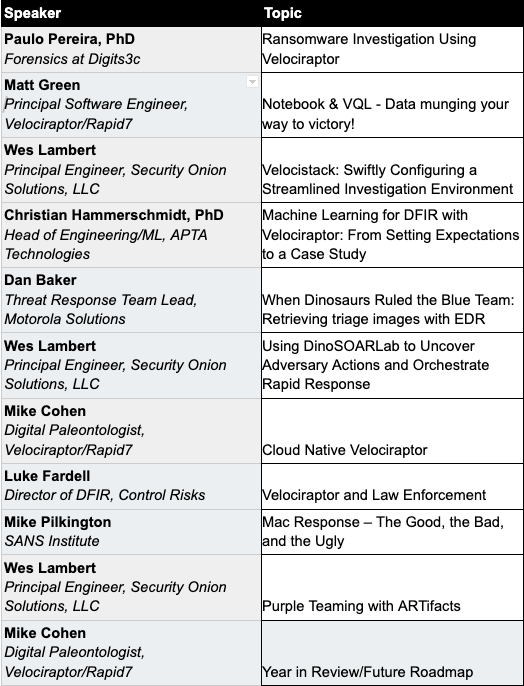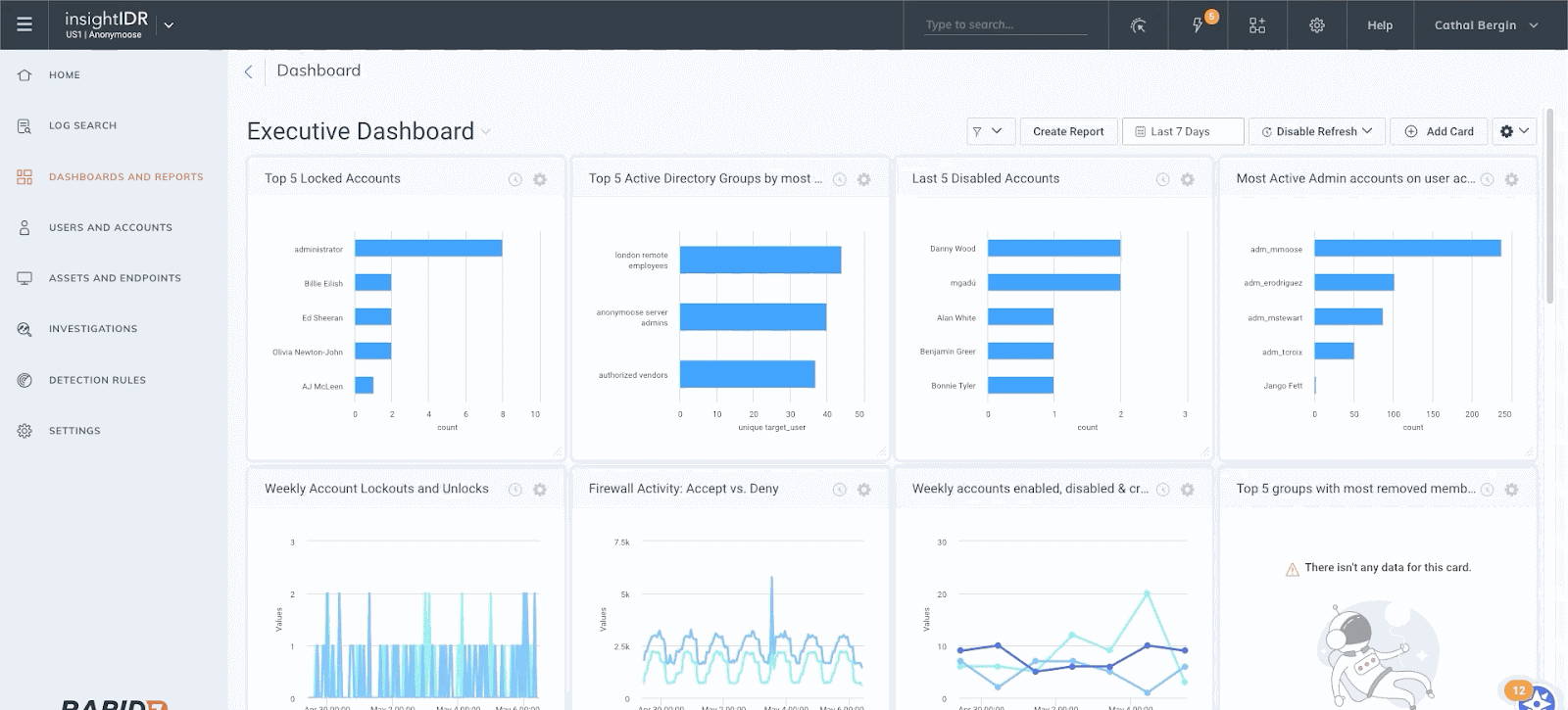Post Syndicated from Robert Holzer original https://blog.rapid7.com/2022/09/27/how-to-deploy-a-siem-that-actually-works/
I deployed my SIEM in days, not months – here’s how you can too

As an IT administrator at a highly digitized manufacturing company, I spent many sleepless nights with no visibility into the activity and security of our environment before deploying a security information and event management (SIEM) solution. At the company I work for, Schlotterer Sonnenschutz Systeme GmbH, we have a lot of manufacturing machines that rely on internet access and external companies that remotely connect to our company’s environment – and I couldn’t see any of it happening. One of my biggest priorities was to source and implement state-of-the-art security solutions – beginning with a SIEM tool.
I asked colleagues and partners in the IT sector about their experience with deploying and leveraging SIEM technology. The majority of the feedback I received was that deploying a SIEM was a lengthy and difficult process. Then, once stood up, SIEMs were often missing information or difficult to pull actionable data from.
The feedback did not instill much confidence – particularly as this would be the first time I personally had deployed a SIEM. I was prepared for a long deployment road ahead, with the risk of shelfware looming over us. However, to my surprise, after identifying Rapid7’s InsightIDR as our chosen solution, the process was manageable and efficient, and we began receiving value just days after deployment. Rapid7 is clearly an outlier in this space: able to deliver an intuitive and accelerated onboarding experience while still driving actionable insights and sophisticated security results.
3 key steps for successful SIEM deployment
Based on my experience, our team identified three critical steps that must be taken in order to have a successful SIEM deployment:
- Identifying core event sources and assets you intend to onboard before deployment
- Collecting and correlating relevant and actionable security telemetry to form a holistic and accurate view of your environment while driving reliable early threat detection (not noise)
- Putting data to work in your SIEM so you can begin visualizing and analyzing to validate the success of your deployment
1. Identify core event sources and assets to onboard
Before deploying a SIEM, gather as much information as possible about your environment so you can easily begin the deployment process. Rapid7 provided easy-to-understand help documentation all throughout our deployment process in order to set us up for success. The instructions were highly detailed and easy to understand, making the setup quick and painless. Additionally, they provide a wide selection of pre-built event sources out-of-the-box, simplifying my experience. Within hours, I had all the information I needed in front of me.
Based on Rapid7’s recommendations, we set up what is referred to as the six core event sources:
- Active Directory (AD)
- Protocol (LDAP) server
- Dynamic Host Configuration Protocol (DHCP) event logs
- Domain Name System (DNS)
- Virtual Private Network (VPN)
- Firewall
Creating these event sources will get the most information flowing through your SIEM and if your solution has user behavior entity analytics (UEBA) capabilities like InsightIDR. Getting all the data in quickly begins the baselining process so you can identify anomalies and potential user and insider threats down the road.
2. Collecting and correlating relevant and actionable security telemetry
When deployed and configured properly, a good SIEM will unify your security telemetry into a single cohesive picture. When done ineffectively, a SIEM can create an endless maze of noise and alerts. Striking a balance of ingesting the right security telemetry and threat intelligence to drive meaningful, actionable threat detections is critical to effective detection, investigation, and response. A great solution harmonizes otherwise disparate sources to give a cohesive view of the environment and malicious activity.
InsightIDR came with a native endpoint agent, network sensor, and a host of integrations to make this process much easier. To provide some context, at Schlotterer Sonnenschutz Systeme GmbH, we have a large number of mobile devices, laptops, surface devices, and other endpoints that exist outside the company. The combined Insight Network Sensor and Insight Agent monitor our environment beyond the physical borders of our IT for complete visibility across offices, remote employees, virtual devices, and more.
Personally, when it comes to installing any agent, I prefer to take a step-by-step approach to reduce any potential negative effects the agent might have on endpoints. With InsightIDR, I easily deployed the Insight Agent on my own computer; then, I pushed it to an additional group of computers. The Rapid7 Agent’s lightweight software deployment is easy on our infrastructure. It took me no time to deploy it confidently to all our endpoints.
With data effectively ingested, we prepared to turn our attention to threat detection. Traditional SIEMs we had explored left much of the detection content creation to us to configure and manage – significantly swelling the scope of deployment and day-to-day operations. However, Rapid7 comes with an expansive managed library of curated detections out of the box – eliminating the need for upfront customizing and configuring and giving us coverage immediately. The Rapid7 detections are vetted by their in-house MDR SOC, which means they don’t create too much noise, and I had to do little to no tuning so that they aligned with my environment.
3. Putting your data to work in your SIEM
For our resource-constrained team, ensuring that we had relevant dashboarding and reports to track critical systems, activity across our network, and support audits and regulatory requirements was always a big focus. From talking to my peers, we were weary of building dashboards that would require our team to take on complicated query writing to create sophisticated visuals and reports. The prebuilt dashboards included within InsightIDR were again a huge time-saver for our team and helped us mobilize around sophisticated security reporting out of the gate. For example, I am using InsightIDR’s Active Directory Admin Actions dashboard to identify:
- What accounts were created in the past 24 hours?
- What accounts were deleted in the past 24 hours?
- What accounts changed their password?
- Who was added as a domain administrator?
Because the dashboards are already built into the system, it takes me just a few minutes to see the information I need to see and export that data to an interactive HTML report I can provide to my stakeholders. When deploying your own SIEM, I recommend really digging into the visualization options, seeing what it will take to build your own cards, and exploring any available prebuilt content to understand how long it may take you to begin seeing actionable data.
I now have knowledge about my environment. I know what happens. I know for sure that if there is anything malicious or suspicious in my environment, Rapid7, the Insight Agent, or any of the sources we have integrated to InsightIDR will catch it, and I can take action right away.
Additional reading:






![[The Lost Bots] S02E03: Browser-in-Browser Attacks — Don't Get (Cat)-Phished](https://blog.rapid7.com/content/images/2022/08/The-Lost-Bots-logo-large.png)








![[The Lost Bots] Season 2, Episode 2: The Worst and Best Hollywood Cybersecurity Depictions](https://blog.rapid7.com/content/images/2022/07/The-Lost-Bots-logo-large.png)













![[The Lost Bots] Season 2, Episode 1: SIEM Deployment in 10 Minutes](https://blog.rapid7.com/content/images/2022/06/The-Lost-Bots-logo-large.png)